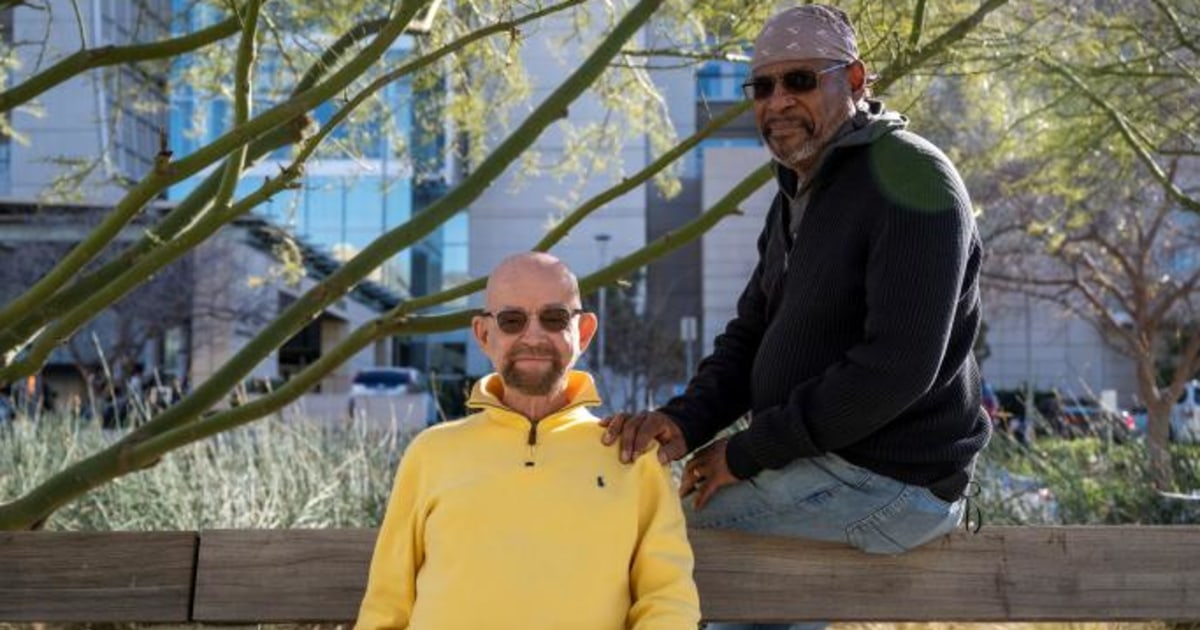Leukemia – also known as blood cancer – can have a wide variety of symptoms.
What signs adults and children should see a doctor for.
Berlin – Every year around 12,000 people in Germany contract leukemia, also known colloquially as blood cancer.
This is relatively small compared to other types of cancer - but the prognosis for leukemia patients is often not good.
According to Focus
, only around half of adults with blood cancer
are still alive five years after diagnosis.
In children, the chances of recovery are significantly better.
The reason for the poor prognosis is often that the disease is diagnosed too late – but what are the symptoms of leukemia anyway?
This is reported by kreiszeitung.de.
Symptoms of leukemia - they differ in acute and chronic blood cancer
Although the disease leukemia is often referred to as blood cancer, strictly speaking, the type of cancer is a disease of the blood-forming system and thus originates in the bone marrow.
This is where the different blood cells are formed.
Diseased white blood cells are formed in leukemia, hence the name: Literally translated, the term leukemia, which comes from the Greek, means "white blood".
Definition of blood cancer: What is leukemia - simply explained?
Definition of Leukemia
Leukemia (also called blood cancer) is a group of cancers of the blood-forming system, in which degenerated white blood cells (leukocytes) multiply uncontrollably.
Those affected usually have too many white blood cells in their blood.
Literally translated, leukemia means "white blood".
Due to medical advances, blood cancer is much easier to treat today and the chances of recovery have also increased.
Source: University Hospital Zurich
Since the leukemia cells get into the whole body via the blood, they can
also attack and damage the nervous system and internal organs, according to the
cancer information service of the German Cancer Research Center (dkfz) .
Leukemia can be divided into two different types of cancer:
acute leukemias
chronic leukemias
These two types of leukemia differ significantly from each other in terms of symptoms, course of the disease, prognosis and also the treatment options.
However, it is always the case that early detection of cancer increases the chances of recovery.
Chances of recovery from leukemia: is blood cancer curable?
What are the chances of recovery from leukemia?
The chances of curing leukemia depend greatly on the type of leukemia a person has and the age of the patient.
According to Alwin Krämer, professor at the German Cancer Research Center, a "majority of patients" can be "treated well and partially cured" with chemotherapy.
In another proportion of patients, the disease cannot be cured over a long period of time, but it can be controlled well.
Source: German Cancer Research Center
Signs of acute leukemia: which symptoms can indicate a disease
Acute leukemias can be subdivided into myeloid (AML) and lymphatic blood cancer (ALL).
In the case of acute leukemia, the symptoms of those affected appear comparatively suddenly - many sufferers feel largely or even completely healthy only a short time beforehand.
According to the German Cancer Research Center,
signs of acute leukemia in adults can
be as follows:
First signs of leukemia in adults - also visible on the skin as bruises
What are early signs of leukemia?
exhaustion and tiredness
Noticeable skin pallor
Frequent and protracted infections and fever
Increased tendency to bleed: For example, bleeding from the nose or gums, punctiform skin bleeding (petechiae) and bruises (hematomas), small and large wounds bleed longer
bone and joint pain
Abdominal pain, as a result of an enlarged liver or spleen
Headache
Dizziness, sensory disturbances or paralysis
Shortness of breath, even with only moderate physical exertion
Important: The occurrence of one or more symptoms is not automatically associated with leukemia. These are only signs that can point to this.
The symptoms of colorectal cancer look very different.
Can you have leukemia without realizing it?
Chronic blood cancer is insidious
In the case of chronic leukemia, the course is much more insidious.
This develops slowly and often over years.
The disease extends over three stages of the disease, each of which has a specific clinical picture.
How long the various phases of the disease last and whether all phases are actually passed through depends on the patient in question.
The first stage of chronic leukemia is called the chronic phase.
Some of those affected have no symptoms at all during this time.
In others, these are so slight that they do not burden the patient - or only some of the signs appear.
For this reason, many people are diagnosed with a disease in this phase rather accidentally - for example with a blood test carried out for a different reason.
But according to the
German Cancer Research Center
, there are also the first leukemia symptoms in this phase, which can indicate a disease:
Chronic leukemia in adults: which symptoms can indicate a disease
Fatigue, paleness and reduced performance
Fever without clear cause and/or night sweats
bone pain
Abdominal pain that can radiate to the back
Loss of appetite and unwanted weight loss
Important: The occurrence of one or more symptoms is not automatically associated with leukemia.
These are only signs that can point to this.
Signs of leukemia can only appear years later in chronic blood cancer
After the first phase, which can last for several years, chronic leukemia enters the so-called accelerated phase.
Over time, the general condition of those affected deteriorates and the severity of the symptoms increases.
From a medical point of view, the number of immature white blood cells (called blasts) increases significantly during this phase, as reported by the
cancer information service dkfz
.
The last stage is accordingly called the blast phase, in which the signs eventually correspond to those of acute leukemia.
Symptoms in children: bruises and skin changes - but leukemia is better curable
Unfortunately, blood cancer not only affects adults, but also the youngest among us: leukemia is actually the most common cancer in children under the age of 15.
According to the health
portal gesundheit.gv
, blood cancer accounts for around a third of all cancers in children and adolescents.
However, in contrast to the prognosis for adults, affected children can be completely cured in many cases.
In addition, the course and symptoms differ from those in adulthood.
Leukemia in children and adults – at what age do those affected most frequently develop blood cancer?
At what age is leukemia most common?
On average, people between the ages of 60 and 70 develop leukemia most frequently.
Men are slightly more likely to be affected by blood cancer than women.
About four percent of patients are children under the age of 15.
Although the individual types of leukemia can occur at any age, they are particularly common in certain age groups:
Acute lymphocytic leukemia (ALL) is most common in children and young adults.
Children between the ages of three and seven are particularly affected.
Acute myeloid (AML) and chronic leukemias are particularly common in adults.
Source: German Cancer Society (DKG)
With our newsletter you won't miss anything from your area, Germany and the world - register now for free!
Chronic leukemias are very rare among children, so the absolute majority of sick adolescents have acute lymphoblastic or acute myeloid leukemia.
The symptoms usually develop within a few weeks.
According to the health portal
gesundheit.gv,
these symptoms can occur in children:
Symptoms of leukemia in children: These signs can indicate a disease
Tiredness, general exhaustion and listlessness, feeling sick
Pallor of the skin and mucous membrane
Fever
Increased tendency to infection
Increased tendency to bleeding: e.g. bleeding from the nose or gums, bruises without a corresponding external cause, punctiform skin bleeding
bone and joint pain
Swollen, non-tender lymph nodes
abdominal pain and loss of appetite (due to enlargement of the spleen and/or liver)
Important: The occurrence of one or more symptoms is not automatically associated with leukemia.
These are only signs that can point to this.
Signs of Leukemia: Symptoms are by no means related to disease
However, it is important to emphasize that the isolated detection of these symptoms does not automatically mean that you or your child suffer from blood cancer.
The signs can also appear in harmless conditions that are not related to leukemia.
Nevertheless, you should consult a doctor to get to the bottom of the cause of your symptoms.
Because if leukemia is suspected, a quick diagnosis is important.
Living with leukemia: how long is that possible?
How long can you live with leukemia?
There is no general answer to this question, since the survival time from leukemia depends on the individual case of the patient and the type of blood cancer.
Chronic leukemia can develop undetected over a period of years, while the course of the disease in acute leukemia is usually much faster.
According to
Focus
, however, only around half of adults with blood cancer are alive
five years after diagnosis.
Early detection and prevention of leukemia - more difficult than with other types of cancer
However, there is no specific early detection test for leukemia.
According to the
German Cancer Research Center
, one of the reasons for this is that acute leukemias develop very quickly and their symptoms become apparent very suddenly - even the blood values of those affected could not have been used to tell before the diagnosis that they would soon become ill.
In the case of chronic leukemia, there are also no options for early detection of the disease.
They are therefore often discovered by accident.
Also, one cannot actively prevent leukemia through a healthy diet or a lot of exercise.
There is no examination for early detection of leukemia - but risk avoidance as a precaution
According to the Internet portal of the German Cancer Society (DKG)
, it is therefore important to avoid risk factors
in the prevention of leukemia .
In most cases, no cause can be identified for the development of leukemia, but the following measures can be taken to reduce the risk of developing the disease:
Unnecessary X-ray examinations
Radioactive beams
Smoking
Chemical substances (especially benzene and benzene-containing substances)
These external influences can theoretically play a role in the development of leukemia, but there is usually no evidence of increased stress in the patient's history.
With a few exceptions, according to the health portal
gesundheit.gv,
there is also no family accumulation.






